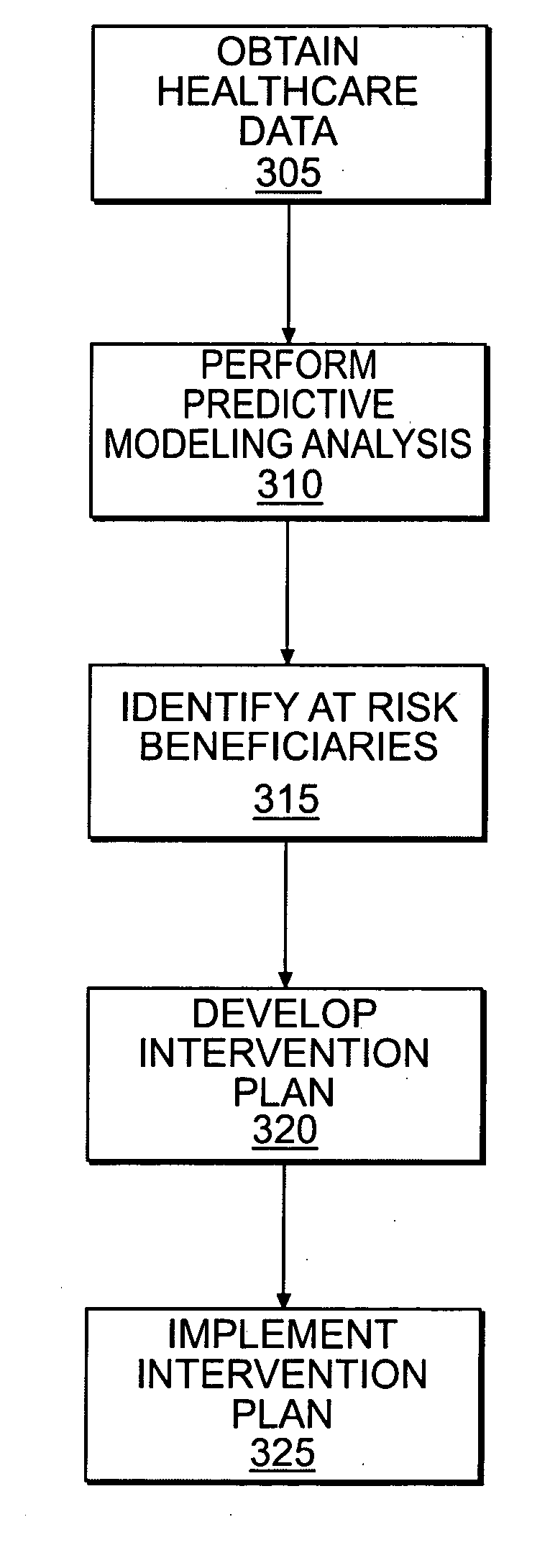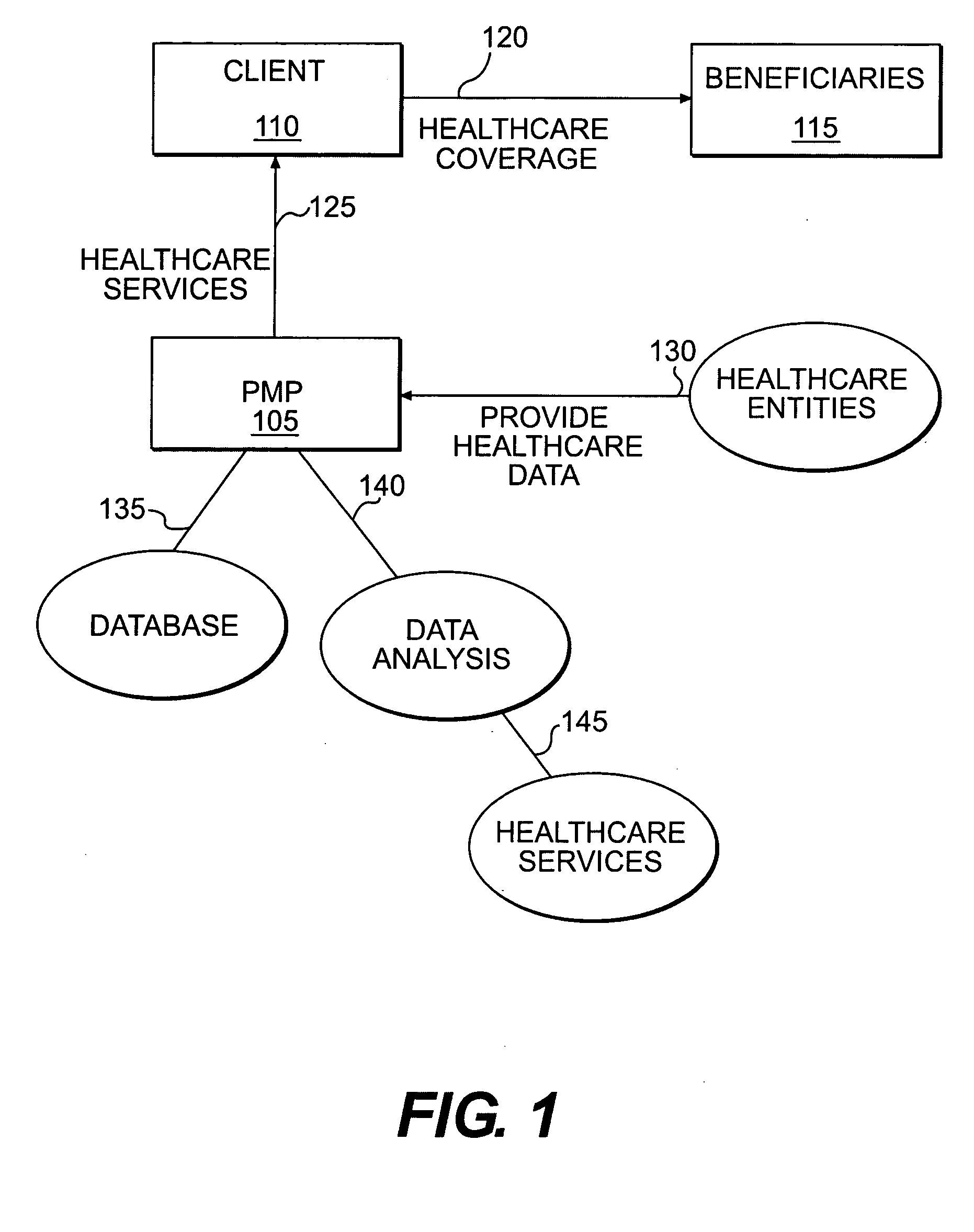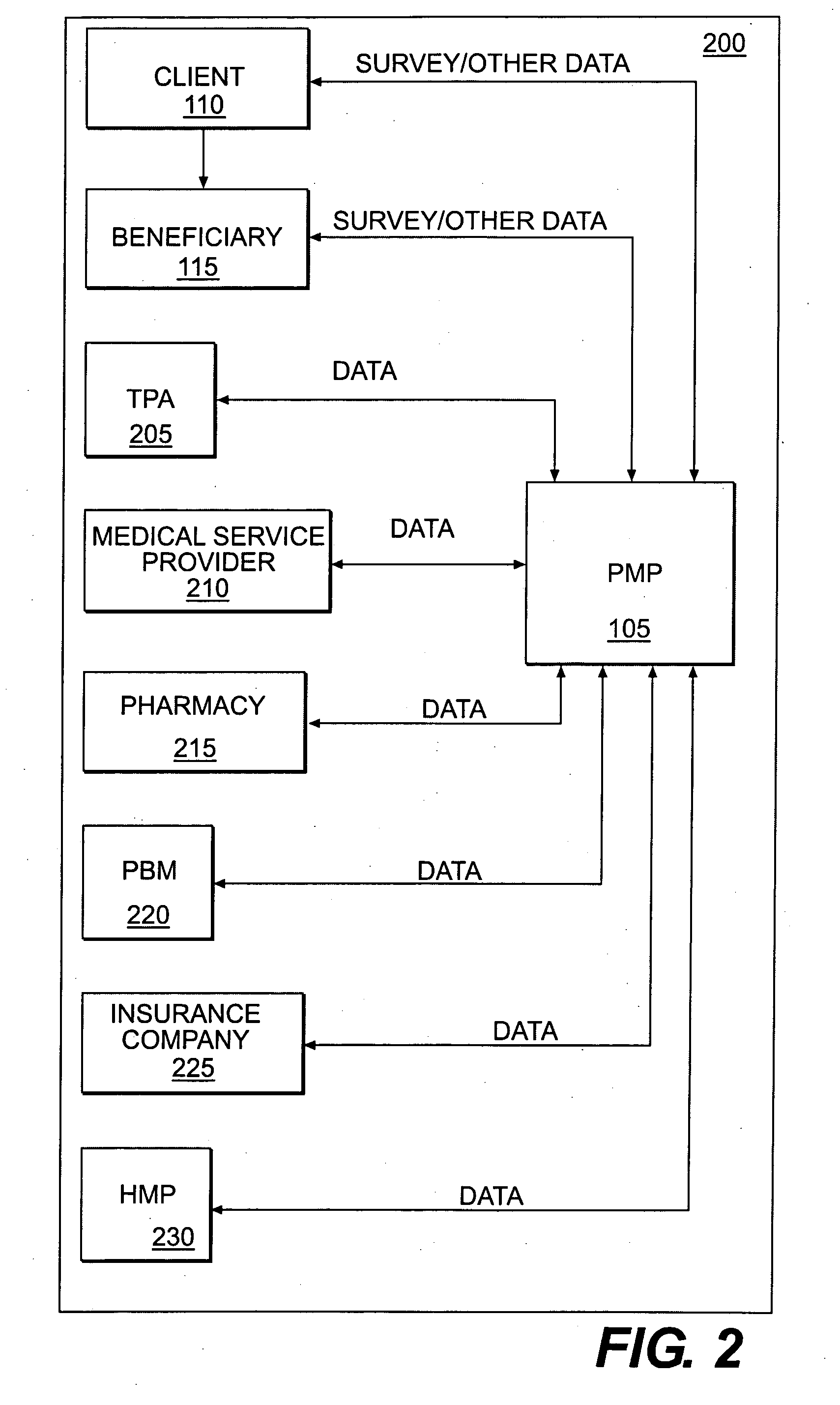Methods and systems for healthcare assessment
a technology for healthcare and assessment, applied in the field of methods and systems for healthcare assessment, can solve the problems of high healthcare industry costs, long life span, and rapid rise in healthcare costs, and achieve the effects of improving pre-hospital care, reducing the risk of death, and accurately reflecting real-world conditions
- Summary
- Abstract
- Description
- Claims
- Application Information
AI Technical Summary
Benefits of technology
Problems solved by technology
Method used
Image
Examples
Embodiment Construction
[0060] Predictive Modeling Provider
[0061] The flow chart depicted in FIG. 1 shows a set of relationships by which a predictive modeling provider (PMP) 105, or another entity hired by the PMP 105 (collectively referred to herein as a “PMP”), may perform one or more services for a client 110. The client 110 may be an employer that provides health care coverage or compensation, in step 120, to a beneficiary 115. Beneficiaries 115 include one or more employees, their spouses, and their dependants. In an alternative embodiment, the client 110 is an insurance company that pays for all or a certain percentage of the beneficiary's 115 health care expenses. In this alternative embodiment, the beneficiaries 115 include members of, or purchasers of, the health coverage the insurance company provides.
[0062] The client 110 hires the PMP 105 in step 125 to perform one or more services. The PMP 105 may be hired to keep track of the health care services provided to one or more beneficiaries 115. ...
PUM
 Login to View More
Login to View More Abstract
Description
Claims
Application Information
 Login to View More
Login to View More - R&D
- Intellectual Property
- Life Sciences
- Materials
- Tech Scout
- Unparalleled Data Quality
- Higher Quality Content
- 60% Fewer Hallucinations
Browse by: Latest US Patents, China's latest patents, Technical Efficacy Thesaurus, Application Domain, Technology Topic, Popular Technical Reports.
© 2025 PatSnap. All rights reserved.Legal|Privacy policy|Modern Slavery Act Transparency Statement|Sitemap|About US| Contact US: help@patsnap.com



